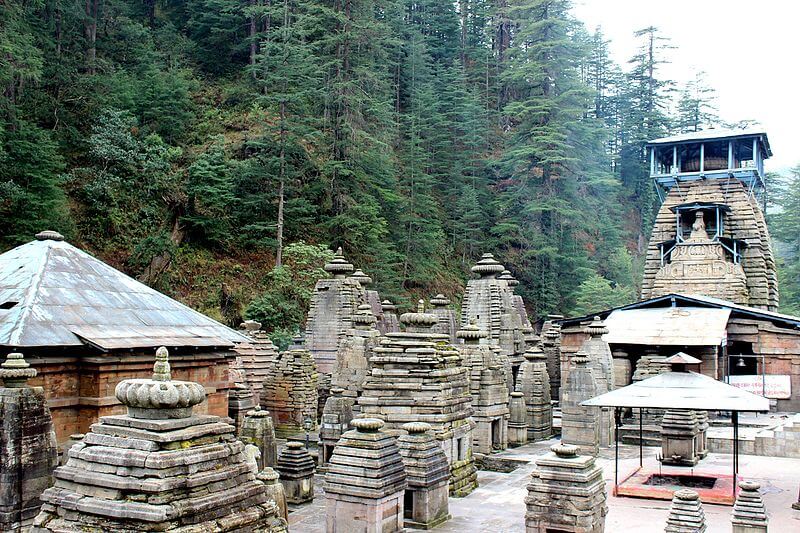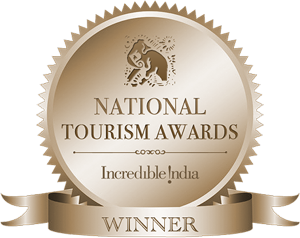Jageshwar is a very famous town located 36 to 37 kilometres northeast of Almora in the kumaon region of Uttarakhand. The town proudly stands at an altitude of 1870 metres above sea level and is considered to be a Tirtha (Pilgrimage Site) as it is the abode of 12 Jyotrilings and also Lord Shiva selected this place as his abode. The town famous for being a shelter to more than 200 temples and is hence called the Temple Town. Out of these, the two major and also the largest are the Dandeshwar and the Jageshwar Group Of Temples. Jageshwar Group Of Temples or The Jageshwar Valley Of Temples, which in historical texts is called the Yageshwara consists of more than 100 Hindu temples, made with cut stone, dated between 7th to 12th Century and some new temples in the 20th Century, of which most are dedicated to Lord Shiva and the remaining are dedicated to Lord Vishnu and Surya Traditions of Hinduism. The origin of the temple however remains unclear as it lacks attention because of it remote location. The valley starts from the satellite road and is about 3.5 metres long including the Jatganga Rivulet, that is a narrow forested valley of oaks, deodar, pines and rhododendrons. The place along with the temples consists of a number of statues of which most are stone lingams and stone images. The valley is popularly known for the two major clusters of Hindu Temples and a number of roadside shrines. The temple depicts various styles of architecture such as the North Indian Nagara style along with South and Central Indian designs. Human habitation is prominent around the valley which happily provide services to the travellers and the pilgrims. All in all, Jageshwar is a Hindu pilgrimage town constructed beautifully with a number of statues and over 25 inscriptions of different periods inscribed in Sanskrit and Brahmi on the walls and the pillars of the temples. Some of the famous temples that the valley includes are:
1)Dandeshwar Temple
2)Chandi Ka Temple
3)Jageshwar Temple
4)Kuber Temple
5)Mritunjaya Temple
6)Nanda Devi
7)Nau Durga
8)Nava Graha Temple
9)Pyramidal Shrine
10)Surya Temple
The town is visited by a number of people throughout the year as it a sacred place for the Hindus and is a perfect holiday destination to explore and refreshing the mind and the body. The place is also considered as a meditation center because of its fresh, calm and beautiful surroundings.
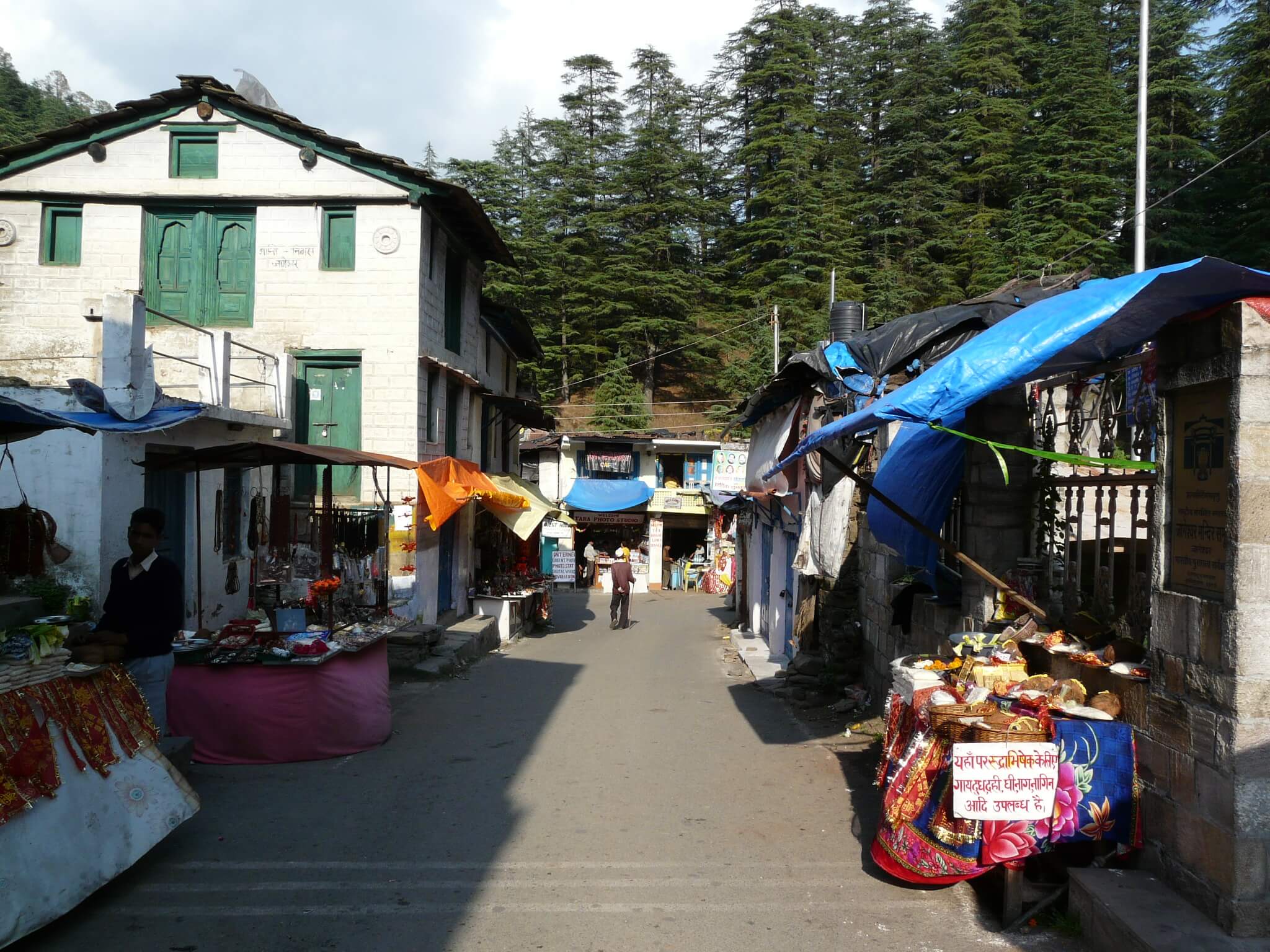
13 Points Of Interest in Jagshwar – The Temple Town
1)Maha Mrityunjaya Temple
The Maha Mritunjaya Temple is the oldest and the largest temple in the Jageshwar Group. The temple is dedicated to Lord Shiva as it is believed to be a seat of the same. This is the only temple of Lord Shiva in Mritunjaya Roop. Constructed in the Pre Katyuri period, the temple is eastern facing and is considered to be one of the most important temples in the group. The temple consists of a Linga which has an eye shaped opening and 25 inscriptions on the exterior walls and pillars written in Sanskrit and Brahami.Linga is worshipped as a saviour from death and it is believed that chanting of Maha Mritunjaya Mantra is a powerful method of self realization, giver freedom from all kinds of fear, illness and negativity.
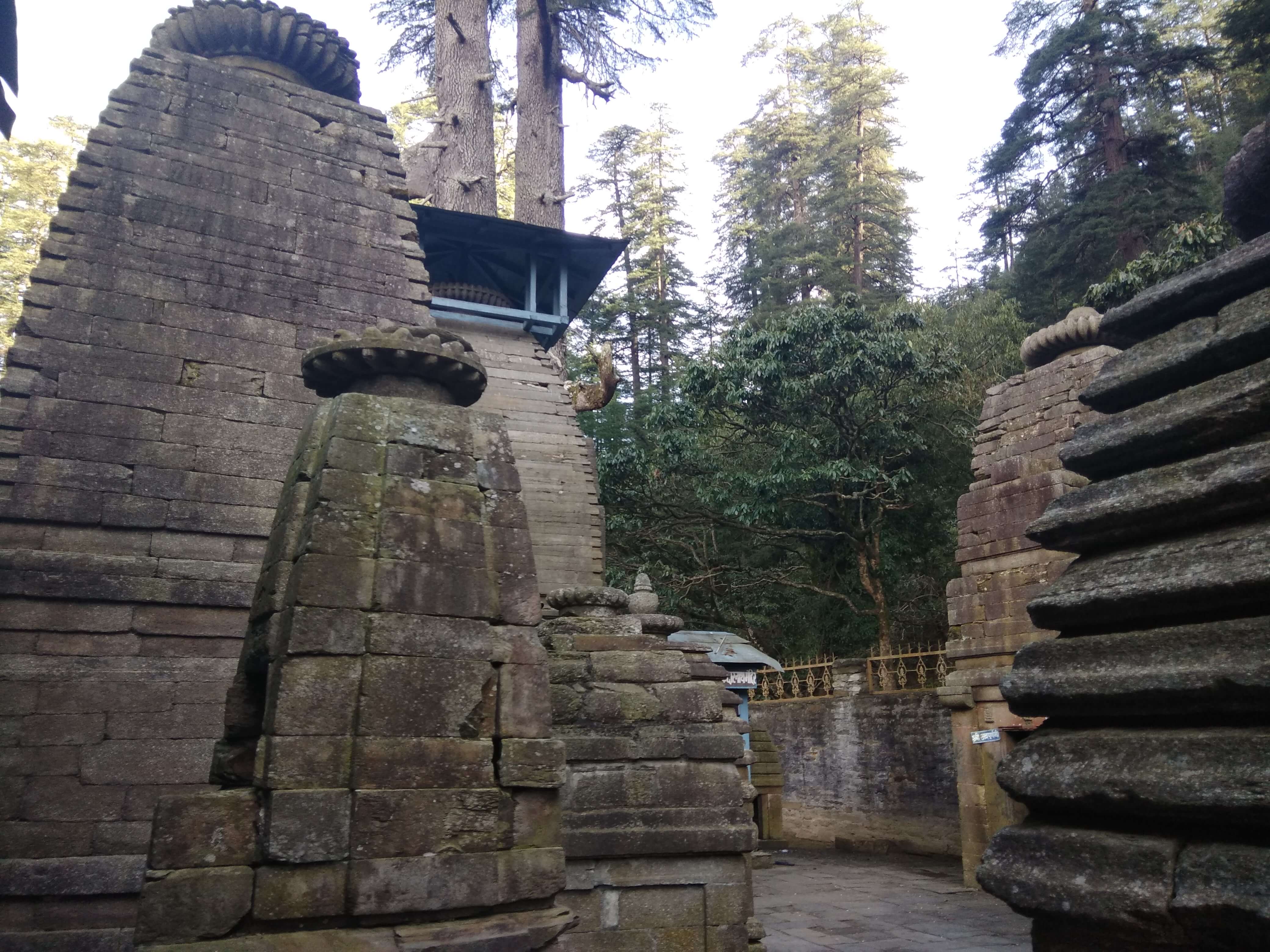
2)Jankar Saim Mahadev Temple
The Jankar Saim Temple is situated at the south in the Jageshwar main complex. The temple is primarly edicated to Jankar Saim who sent his Ganas to kill the demons who were obstructing Lord Shiva’s Tapasya.
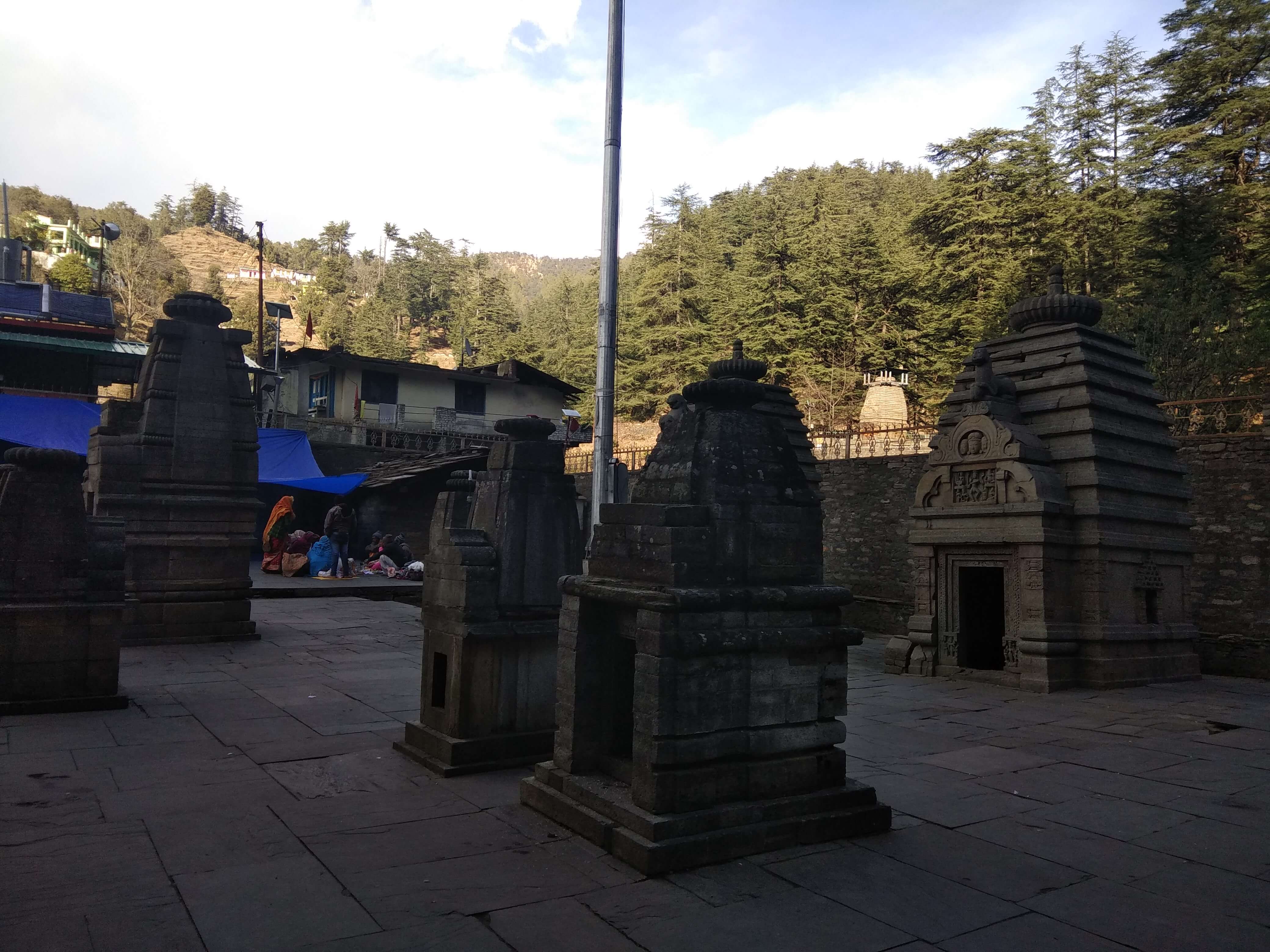
3)Dandeshwar Shiv Temple
The word Dandeshwar is derived from ‘Dand’ meaning Staff and ‘Eshwar’ meaning God and hence it is believed that Lord Shiva resides in the very temple with his staff and keep a guard over the region. The temple is situated slightly upstream that is approximately 2 kms from the main Jageshwar Temple and can be easily reached on foot. The temple is in dilapidated conditions as many of the relics have turned into ruins. The temple is the biggest shrine and consists of a Stone Lingam which unlike the other temples of Jageshwar is a natural rock and is hence not carved. The natural rock makes it unique and depicts the local custom of worshiping god in its divine form. There are some carvings on the top of the dome and several small shrines in the premises. The river flowing underneath the premises provides a beautiful view.

4)Mirtola Ashram
The Mirtola Ashram is situated in Mirtola, a village also known as Uttar Vrindavan approximately 25 kms from Almora. The Ashram was set by Sri Yashoda Maa who was a housewife turned ascetic in 1930 along with her disciple Sri Krishna Prem. This ashram was later run by his disciple Sri Mahadev Ashish. The village is also a house to a Radhe – Krishna Temple which was also built be Yashoda Maa.
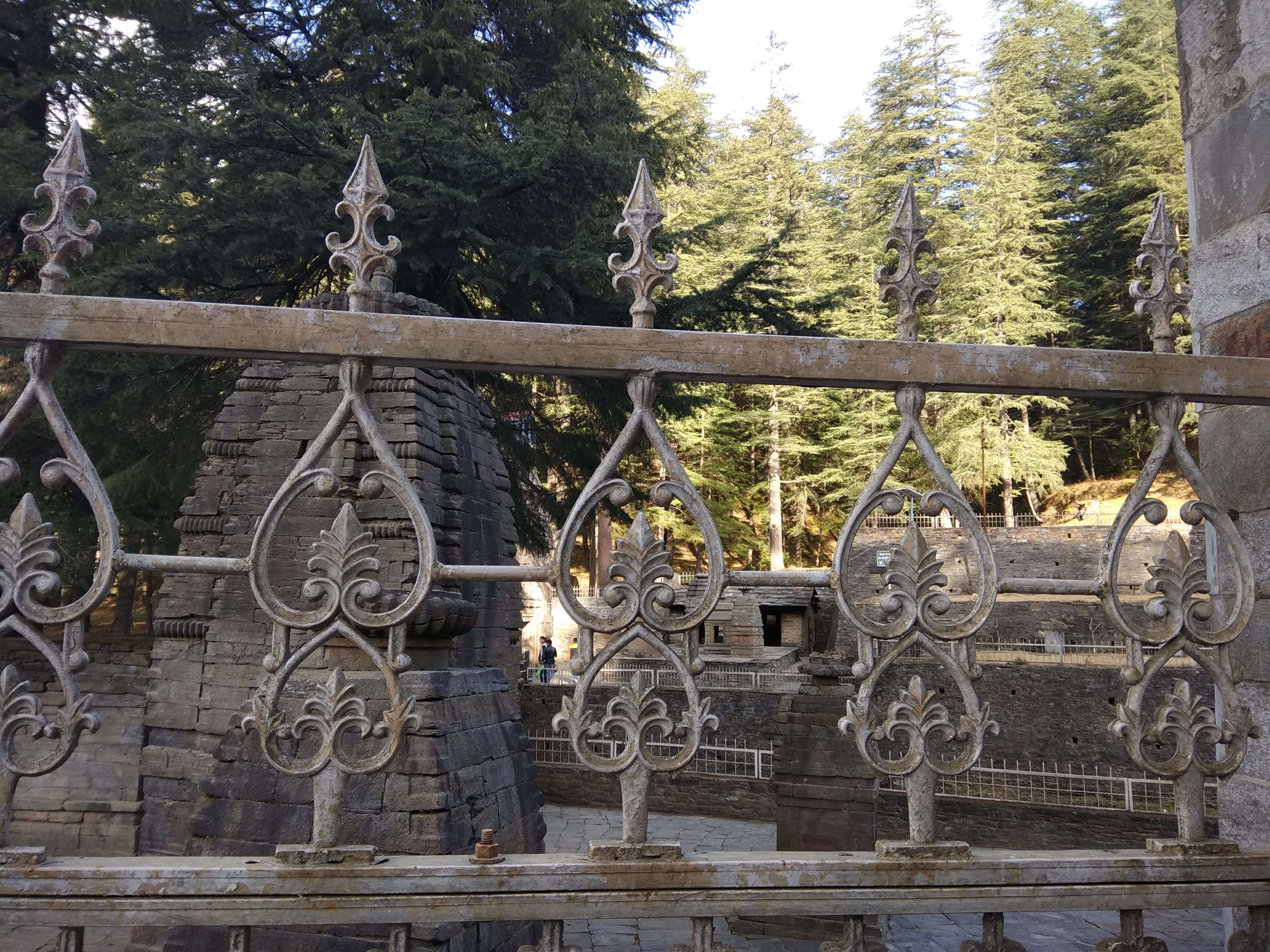
5)Jageshwar Mahadev Temple
The Jageshwar Mahdev Temple is the main temple for which the Jageshwar town is famous. A lot of details about the temple has been listed in the introduction. Jageshwar Mahadev Temple is primarily dedicated to Lord Shiva and is also the main temple amongst the group. The temple consists of two guard like statues at the entrance and with a huge bell. Inside the temple there is a Shiv Linga that is considered as a must to worship.
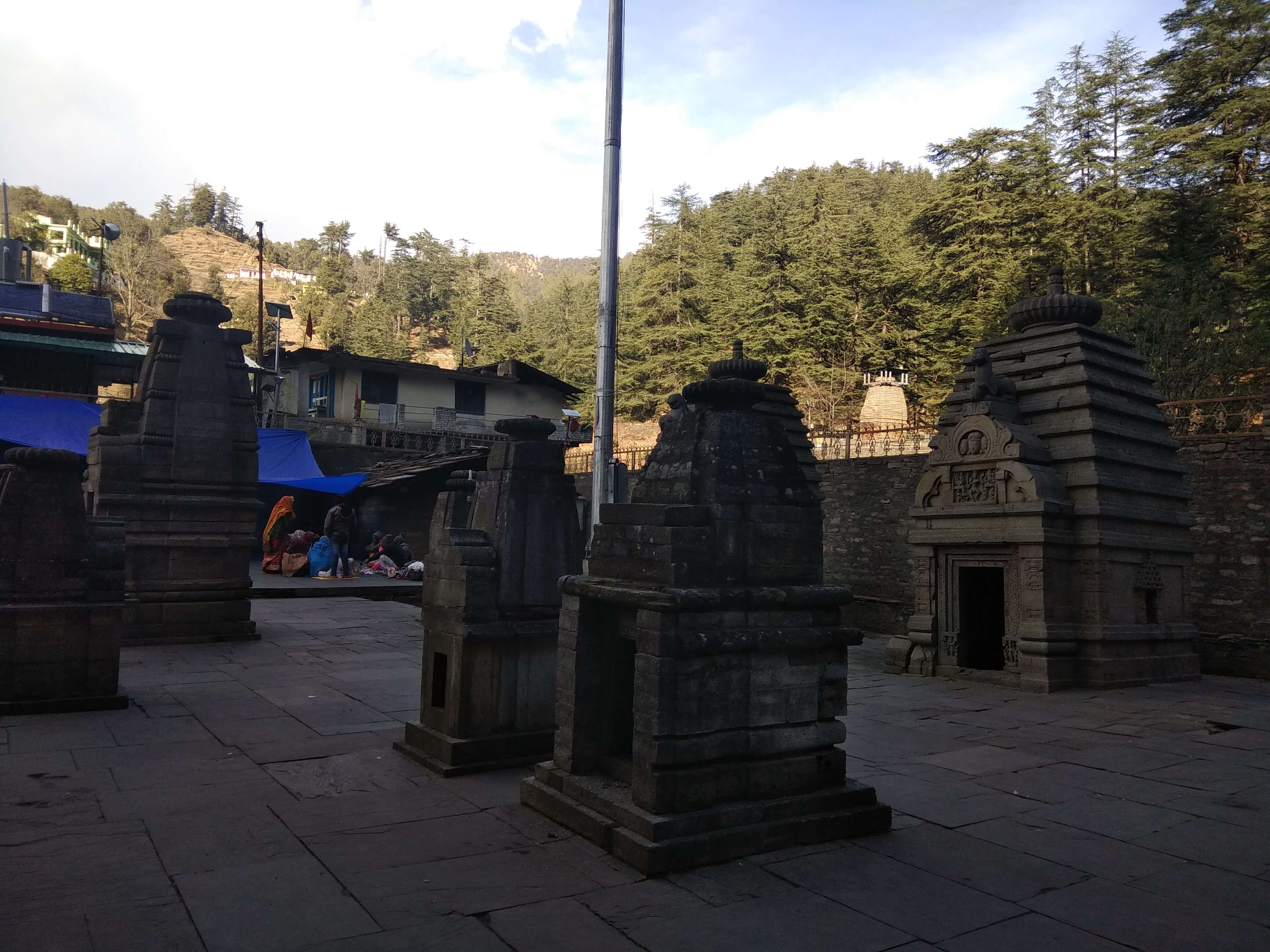
6)Vriddha Jageshwar
Vriddha Jageshwar is an old form of Jageshwar, situated approximately 6.5 uphill from Jageshwar. The temple is dedicated to Lord Shiva and is also known as Old Jageshwar as it was the abode of Shiva before he came down to the main Jageshwar. It is believed that Chand Kings of Kumaon constructed the temple after he won over a war. The place provides peace to the soul and is also a hub of beautiful views of the Himalayan Range.
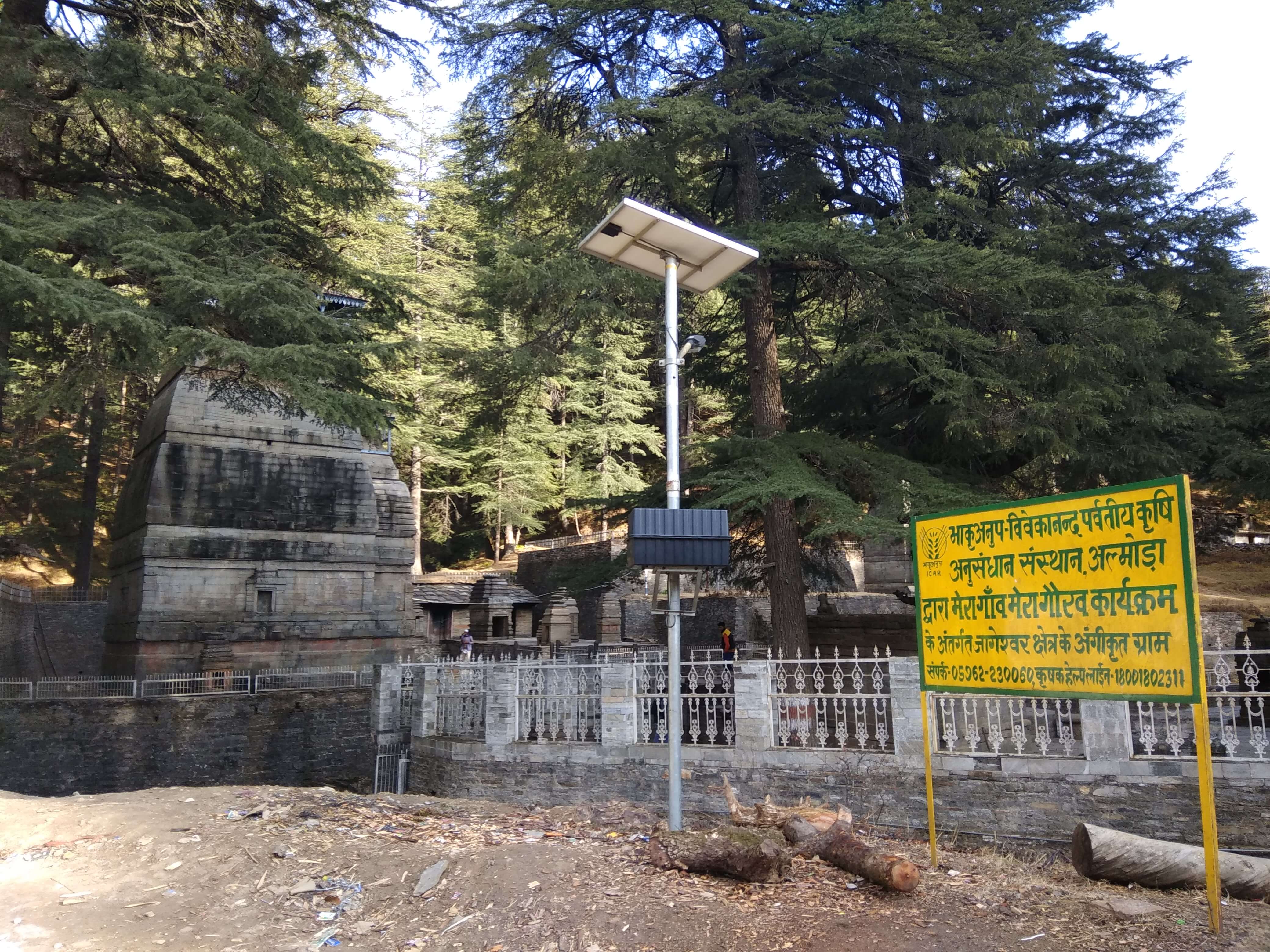
7)Lakulisha Temple
Lakulisha Temple is situated in the premises of the Jageshwar Group Of Temples. A small shiv linga inside the temple is dedicated to Lakulisha, who was an earliest teacher in Pasupata Philosophy and is considered to be the last avatar of Shiva. The reason there is a small Shiva Linga inside the temple is because not much remains of the original deity.

8)Jageshwar Archaeological Museum
The Jageshwar Archaeological Museum is situated just about 0.2km from the Jageshwar Temple. The 1995 sculpture shed was converted into a museum in 2000. The museum is a hub of around 174 sculptures found in the temple region of Jageshwar, Dandeshwar and Kuber Group Of Temples and superb religious carvings dated between 9th -13th century. Museum has two galleries. There are 36 sculptures in the first gallery, kept in wooden pedestals and two show cases. The masterpieces of the gallery are Uma-Maheshwar, Surya and Navgrahas. The image of Uma-Maheshwar having flying celestials, fully ornamented Parvati is siting on the lap of Shiva. The beautiful sculpture of Surya holding lotus in both hands is fully ornamented. Arun (the charioteer) and seven horses are shown at lower side and the rare sculpture of Navgrahas having Surya, Soma, Mangala, Budha, Brrhaspati, Shukra, Shani, Rahu and Ketu are in standing posture.
In the second gallery are 18 sculpture exhibited on the wooden pedestals. This gallery is having unique examples of Uttaranchal art as the Vishapaharanamurti (Shiva drinking poison) of Shiva, Kevalamurti and four armed Chamunda with emaciated body, shrunken belly, protruding ribs and veins, sunken eyes and holding munda in her left hand are the faithful representations of the art of this region.
The central hall of the museum has been constructed to display the main attraction of the region known as “Pona Raja” sculpture and other valuable sculpture of the Jageshwar region. The beautiful sculpture of “Pona Raja” belong to the local king or cult and highly popular and respected one in the region.
Admission to the museum is free and opening hours of the museum are from 10am to 5pm and it remains closed on Friday.
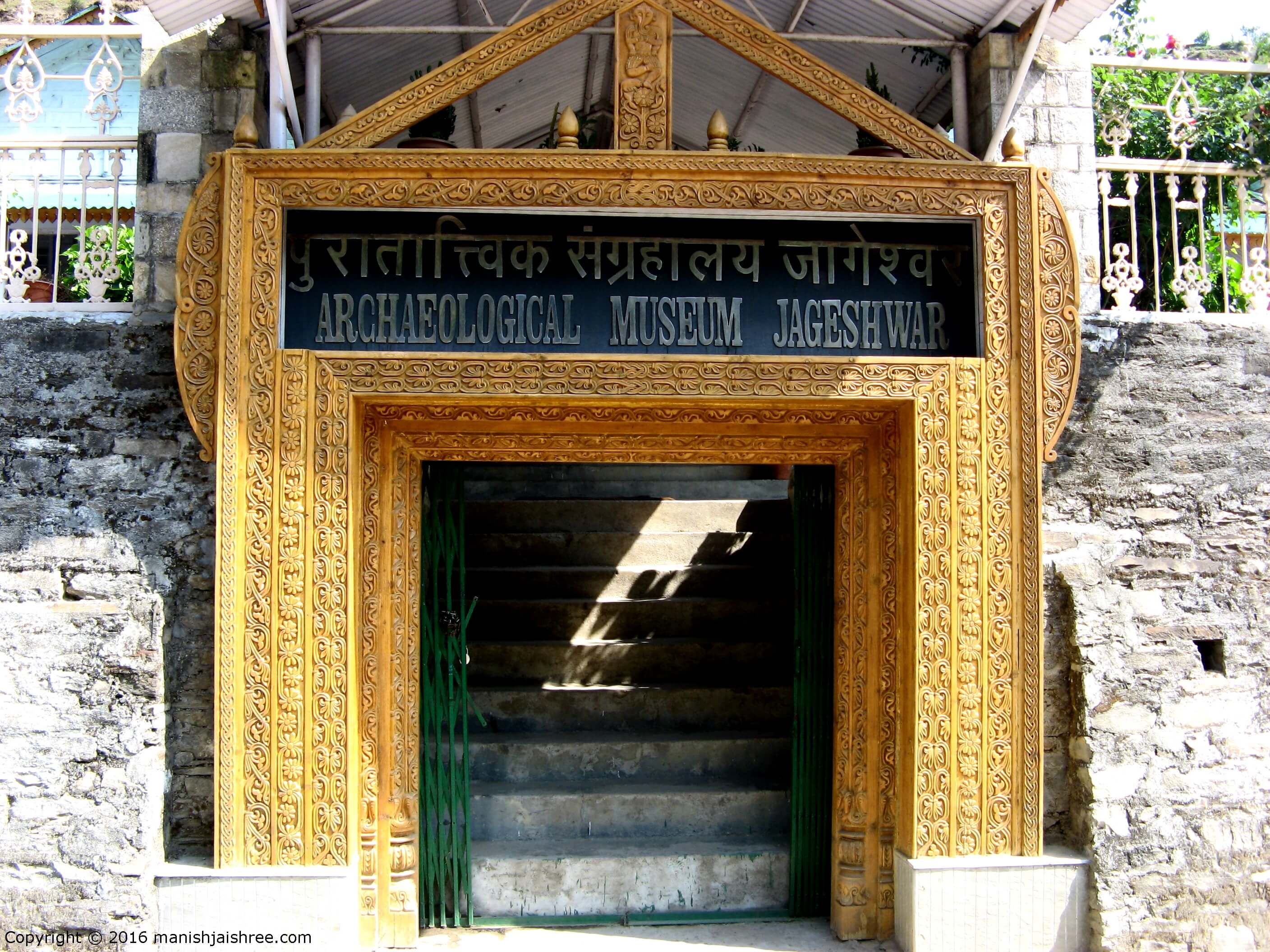
9)Jagganath Temple
The Jagganath Temple is situated in the Jageshwar premises and is famous for a highly impressive image of Ganesha and life sized dwarpals.
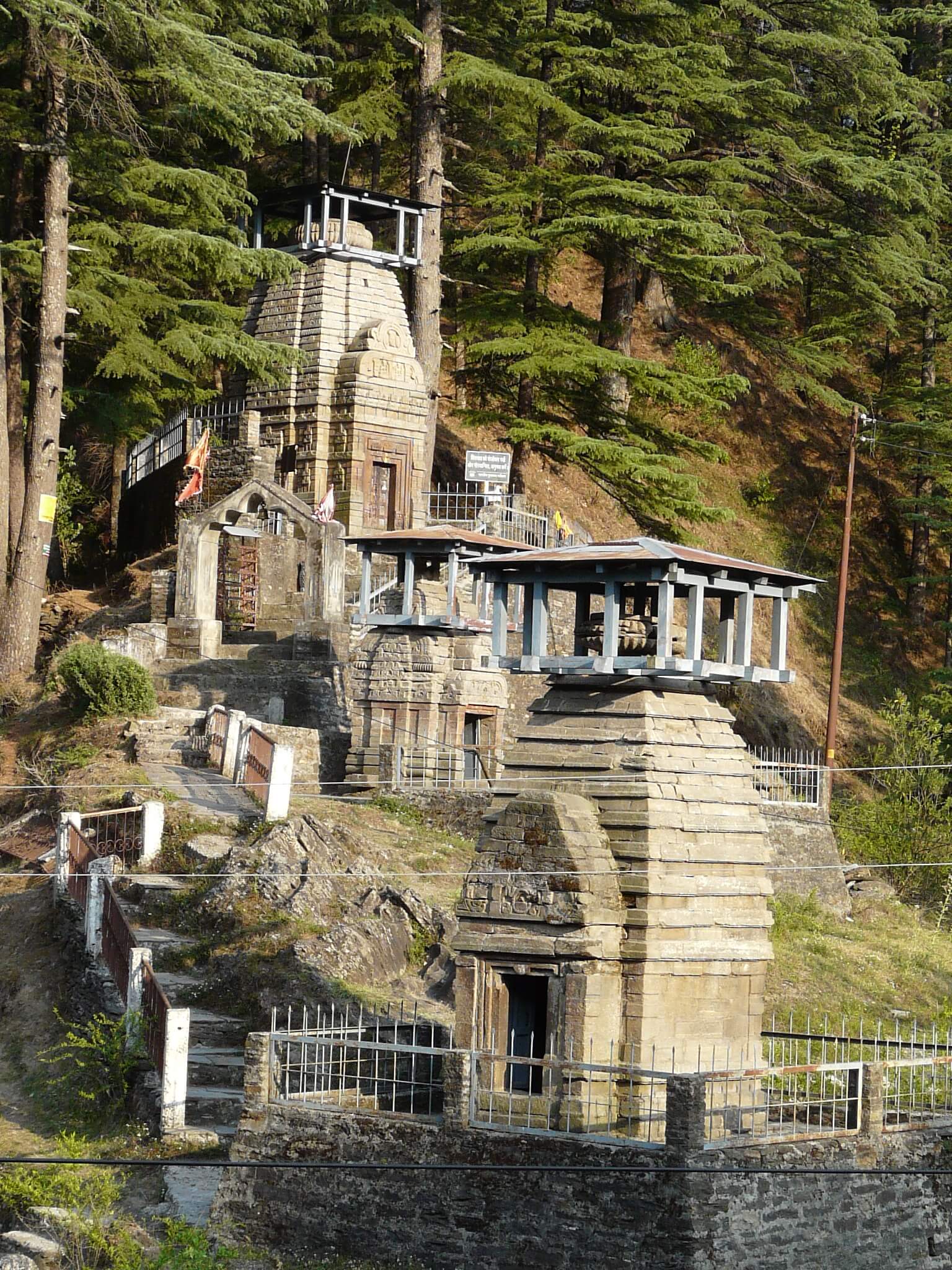
10)Pushti Devi or Pushti Maa
The temple is situated in the Jageshwar main premises and is dedicated to goddess Pushti Devi. The temple enshrines full murti of the goddess and is located towards extreme rights of the complex, jut behind mahamrityunjaya temple.

Related Nearby Monuments
Some more related nearby monuments are:
- Jata Ganga
- Sam Ganga
- Airavat Gufa
- Brahama Kund
- Golu Devta Temple
- Chitai Mandir
- Patal Bhuvneshwar Caves
- Kuber Temple
- Vinyak Shetra
Festivals Celebrated
The temple attracts a number of pilgrims during the festive season. The main festivals celebrated in Jageshwar are:
Jageshwar Monsoon Festival: The festival is celebrated during Shravan that is in the month of July and August. The festival is generally celebrated between 15 July to 15 August.
Maha Shivratri Mela: The festival is celebrated in the early spring on the occasion of Shivratri, that is in the month of January or February.
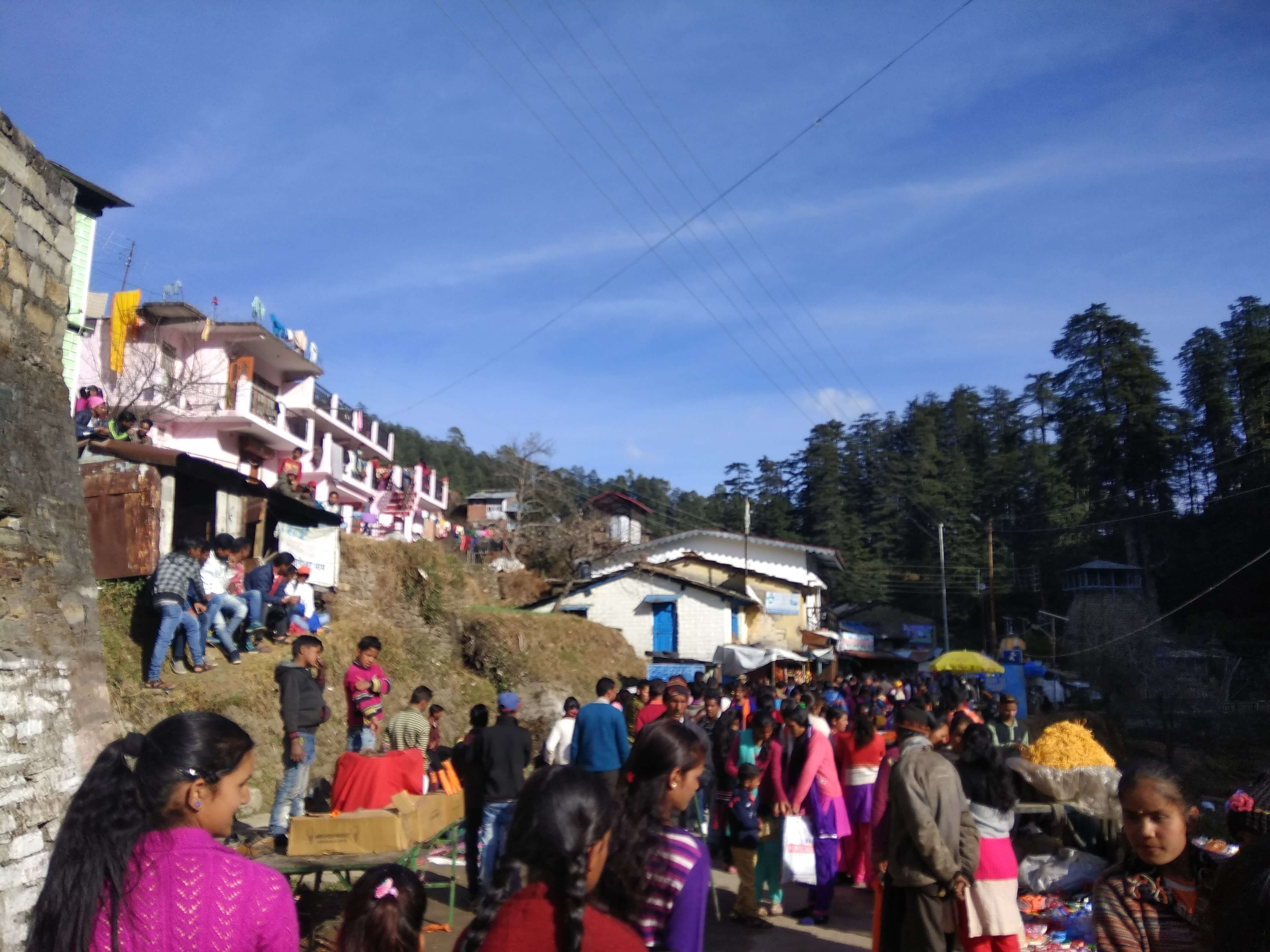
Activities In Jageshwar
Apart from the peace providing meditation centre, one can perform various activities in Jageshwar:
- Nature Walks
- Bird Watching
- Trekking
- Exploring
- Meditation and Yoga
- Splendid view of Himalayan Range
- Pre Historic paintings
- Camping
Good To Know: Jageshwar is at a distance of 100 kms from Nainital
The nearest Railway Station Kathgodam is 125 Kms
The nearest airport at Pantnagar is at a distance of 150 kms
Delhi is at a distance of 388 kms
Vaibhav Laxmi Tourism provides a cab to travel from all nearby areas as well as from Delhi. Give us a chance to make your trip memorable.

